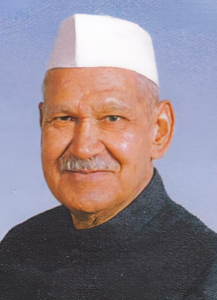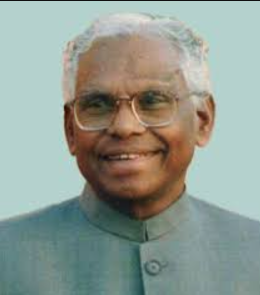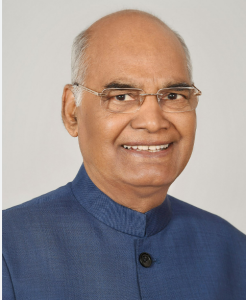List of Presidents of India from 1950 to 2024 is available here. Explore a comprehensive list and detailed profiles of all the Presidents who have served the nation since independence.

Presidents of India: The President of India is the head of state and the first citizen of the country. This prestigious position holds immense significance in the political landscape of India. Since the inception of the Indian Republic in 1950, India has witnessed the leadership of several eminent individuals who have served as the President.
The President of India is elected by an electoral college comprising the elected members of both houses of Parliament and the elected members of the Legislative Assemblies of the states. The President’s role is primarily ceremonial, but they also have certain powers and responsibilities outlined in the Indian Constitution.
India, the world’s largest democracy, has been guided by a series of distinguished leaders who have held the esteemed position of President. These individuals have played a crucial role in upholding constitutional values and preserving the democratic fabric of the nation. In this article, we delve into the lives and contributions of the Presidents of India, from the country’s inception to the present day.
The first President of India was Dr. Rajendra Prasad. He assumed office on January 26, 1950, the day India’s Constitution came into effect and the country became a Republic. Dr. Rajendra Prasad played a significant role in shaping India’s early years as an independent nation and upholding the values enshrined in the Constitution. He served as the President for two terms, from 1950 to 1962, leaving a lasting legacy as the nation’s first constitutional head of state.

As of November 2024, the current president of India is Draupadi Murmu. She became the 15th President of India on July 25, 2022. Check out the complete President of India list from 1947 to 2024 from here:
1. Dr. Rajendra Prasad (1950-1962)

Dr. Rajendra Prasad, India’s first President, took office on January 26, 1950. A prominent freedom fighter and a close associate of Mahatma Gandhi, he played a vital role in the struggle for India’s independence. As President, Dr. Prasad emphasized the importance of unity and diversity, laying the foundation for a harmonious and inclusive nation.
2. Dr. Sarvepalli Radhakrishnan (1962-1967)

Dr. Sarvepalli Radhakrishnan, a renowned philosopher and scholar, served as India’s second President. He was an erudite academician and a passionate advocate for education. During his tenure, Dr. Radhakrishnan continued to promote the values of education, culture, and intellectual growth, leaving an indelible mark on India’s intellectual landscape.
3. Dr. Zakir Husain (1967-1969)

Dr. Zakir Husain, the first Muslim President of India, was a unifying figure in a diverse and multi-religious nation. His presidency was marked by efforts to foster communal harmony and strengthen national integration. Dr. Husain’s vision for a tolerant and inclusive society continues to inspire the nation.
4. V. V. Giri (1969-1974)

V. V. Giri, India’s fourth President, won the presidential election as an independent candidate. Known as the “People’s President,” Giri prioritized the welfare of the common people and championed social justice. His presidency was characterized by a strong commitment to the upliftment of the marginalized sections of society.
5. Fakhruddin Ali Ahmed (1974-1977)

Fakhruddin Ali Ahmed, India’s fifth President, assumed office during a tumultuous period marked by the declaration of the Emergency. Despite the political challenges, President Ahmed upheld the principles of democracy and constitutional values, ensuring the democratic spirit of India remained intact.
6. Neelam Sanjiva Reddy (1977-1982)

Neelam Sanjiva Reddy, India’s sixth President, was known for his deep commitment to parliamentary democracy. As a veteran politician, Reddy’s presidency emphasized the importance of maintaining the balance between the executive, legislative, and judicial branches of government.
7. Giani Zail Singh (1982-1987)

Giani Zail Singh, India’s seventh President, was known for his down-to-earth and affable personality. As President, he aimed to connect with the common people and was often seen mingling with the public without any airs of formality.
8. R. Venkataraman (1987-1992)

R. Venkataraman, India’s eighth President, served during a time of economic reforms and liberalization. His presidency focused on strengthening India’s socio-economic fabric and enhancing the country’s global standing.
9. Dr. Shankar Dayal Sharma (1992-1997)

Dr. Shankar Dayal Sharma, India’s ninth President, was a staunch advocate for social justice and human rights. His presidency saw the celebration of India’s golden jubilee of independence and underscored the importance of preserving democratic values.
10. K. R. Narayanan (1997-2002)

K. R. Narayanan, India’s tenth President and the first from the Dalit community, shattered barriers of caste and privilege. His presidency was marked by a commitment to inclusivity and the empowerment of marginalized communities.
11. Dr. A. P. J. Abdul Kalam (2002-2007)

Dr. A. P. J. Abdul Kalam, India’s eleventh President, was a visionary scientist and a source of inspiration for the nation. As President, he focused on igniting the minds of the youth, promoting education, and fostering scientific temper.
12. Smt. Pratibha Patil (2007-2012)

Smt. Pratibha Patil, India’s first woman President, was a trailblazer in breaking gender barriers. Her presidency highlighted the importance of empowering women and strengthening social bonds.
13. Shri Pranab Mukherjee (2012-2017)

Shri Pranab Mukherjee, India’s thirteenth President, brought vast political experience to his office. His tenure was marked by his deep understanding of constitutional matters and his statesmanship.
14. Shri Ram Nath Kovind (2017-2022)

Shri Ram Nath Kovind, India’s fourteenth President, has been a strong advocate for the welfare of the marginalized and underprivileged sections of society. His presidency is characterized by a commitment to social justice and inclusivity.
15. Droupadi Murmu (2022-Present)

The current President of India is Droupadi Murmu, serving as the 15th President and making history as the first tribal woman to hold this esteemed position in the country. Right from the beginning, Draupadi Murmu, representing the National Democratic Alliance (NDA), had a clear advantage over the opposition candidate Yashwant Sinha due to the support extended by various parties.
President of India List from 1947 to 2024, Tenure, Names, Facts
The list of Presidents of India spans from 1950 to 2024. The President is the highest-ranking official in the country, referred to as the first citizen, and holds significant executive powers according to Articles 52 and 53 of the Indian Constitution. On November 26, 1949, the Constitution was adopted, and it came into effect on January 26, 1950, with Dr. Rajendra Prasad becoming the first constitutional head of the state as the President of India.
Check out the list below of Presidents of India, tracing the journey of leadership and the notable contributions made by each President:
| President | Years | Notable Contributions |
|---|---|---|
| Dr. Rajendra Prasad | 1950-1962 | Shaped early years of independent India, set democratic foundations |
| Dr. Sarvepalli Radhakrishnan | 1962-1967 | Emphasized the importance of education, renowned philosopher and scholar |
| Dr. Zakir Husain | 1967-1969 | Promoted national integration and educational advancements |
| V. V. Giri | 1969-1974 | Served as an independent candidate, and faced political challenges |
| Fakhruddin Ali Ahmed | 1974-1977 | Held the presidency during a turbulent period, including the Emergency declaration |
| Neelam Sanjiva Reddy | 1977-1982 | Strengthened democratic institutions, youngest President of India |
| Giani Zail Singh | 1982-1987 | Veteran freedom fighter led during significant political developments |
| R. Venkataraman | 1987-1992 | Safeguarded constitutional values, upheld principles of justice |
| Dr. Shankar Dayal Sharma | 1992-1997 | Advocate for social justice and harmony throughout tenure |
| K. R. Narayanan | 1997-2002 | Focus on uplifting marginalized sections of society, promoted social inclusivity |
| Dr. A. P. J. Abdul Kalam | 2002-2007 | Renowned scientist, vision of developed India, contributions to science and technology |
| Pratibha Patil | 2007-2012 | First woman President, worked towards empowering women and addressing social issues |
| Pranab Mukherjee | 2012-2017 | Shaped economic policies, strengthened international relations |
| Ram Nath Kovind | 2017-2022 | Focus on inclusive development, empowerment of marginalized communities |
| Droupadi Murmu | 2022- Present | She is the first tribal woman to hold the office, marking a historic milestone in the nation’s leadership. |

The election of the President of India follows the guidelines specified in Article 54 of the Constitution. The process involves an indirect election conducted by an electoral college using a single transferable vote system and a secret ballot, ensuring proportional representation. The Constitution introduces two criteria to ensure equality and consistency in the weight of votes cast by Members of Parliament (MPs) and Members of Legislative Assembly (MLAs).
As per the Constitution, the value of each MLA’s vote from a state must be proportionate to its population, thus ensuring uniform representation for all states.
The eligibility criteria for candidates running for the position of President of India are outlined in Article 58 of the Constitution. To be eligible, a person must be an Indian citizen, at least 35 years old, and meet the qualifications required for election to the House of People (Lok Sabha).
However, individuals holding a position of profit under the Government of India, any State Government, or any local or other authority under the control of the aforementioned Governments are ineligible to be elected as President.
The President’s term in office, as per Article 56 of the Constitution, spans five years and commences on the day they take the oath of office. The President has the option to resign by submitting a written letter to the Vice-President. In case of violating the Constitution, the President can be impeached through the process specified in Article 61. The President continues to hold office even after the completion of the five-year term until the successor assumes office. Any resignation addressed to the Vice-President under clause (a) of the proviso to clause (1) becomes effective immediately.
Article 61 of the Indian Constitution lays down the procedure for impeaching the President. Any House of Parliament can bring charges of constitutional violation against the President for impeachment. However, such charges cannot be preferred unless a resolution, containing the proposal to prefer such charges, is moved after giving at least fourteen days’ written notice by not less than one-fourth of the members of the House.
If the charge has been preferred by one House of Parliament, the other House shall conduct an investigation into the charge or request an investigation to be conducted. The President has the right to attend and be represented during the investigation. The President will be removed from office if, as a result of the investigation, a resolution is passed by a majority of not less than two-thirds of the entire membership of the House that investigated or caused the investigation.
The qualifications, election, and impeachment process of the President of India are outlined in the Constitution’s Part V (The Union), Chapter I (The Executive), specifically in Articles 52 to 78. As the head of the executive, legislature, and judiciary, the President holds a significant position in the country.
The President’s term lasts for five years from the date of assuming office, and they have the option to resign at any time by addressing the Vice-President with a resignation letter. Additionally, the President can be removed from office through the process of impeachment before completing their term. Furthermore, the President can continue in office even after the five-year term until the successor takes charge, and they are eligible for re-election to the same office.
The President of India is elected by the Electoral College, which comprises elected members from both Houses of Parliament, legislative assemblies of states, and Union Territories of Delhi and Puducherry. The voting system is preferential, and the members use the single transferable vote method, where their second choice is also taken into account.
APJ Abdul Kalam Biography, Birth, Full Name, Awards, Death
Complete List of All Countries, Capitals, and their Currencies 2023
The first President of India was Dr. Rajendra Prasad. He assumed office on January 26, 1950, the day India's Constitution came into effect, marking the beginning of the Republic of India.
India's first woman President was Smt. Pratibha Patil. She served as the President of India from July 25, 2007, to July 25, 2012. Her tenure marked a historic milestone for women's representation in the country's highest office.
India's "People's President" was Dr. A. P. J. Abdul Kalam. He served as the President of India from July 25, 2002, to July 25, 2007. Dr. Kalam was loved and admired for his down-to-earth nature and dedication to inspiring the youth.
India's first President from the Dalit community was K. R. Narayanan. He served as the President of India from July 25, 1997, to July 25, 2002. His presidency marked a significant milestone in promoting inclusivity and empowering marginalized communities.
Dr. Shankar Dayal Sharma was the President of India during the celebration of India's golden jubilee of independence. He served as the President from July 25, 1992, to July 25, 1997, and his tenure witnessed the nation commemorating 50 years of independence with pride and gratitude.

<div class="new-fform">
</div>